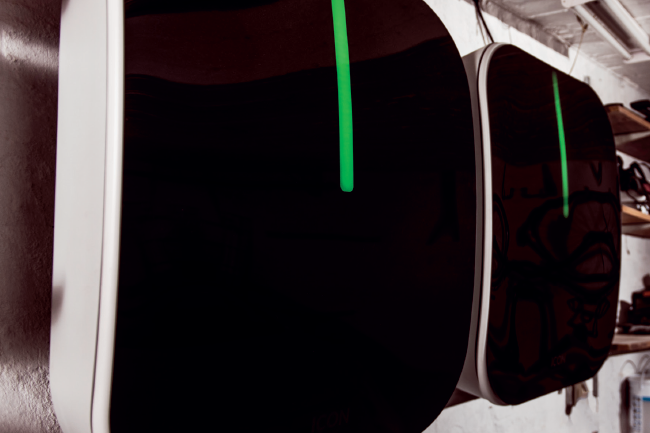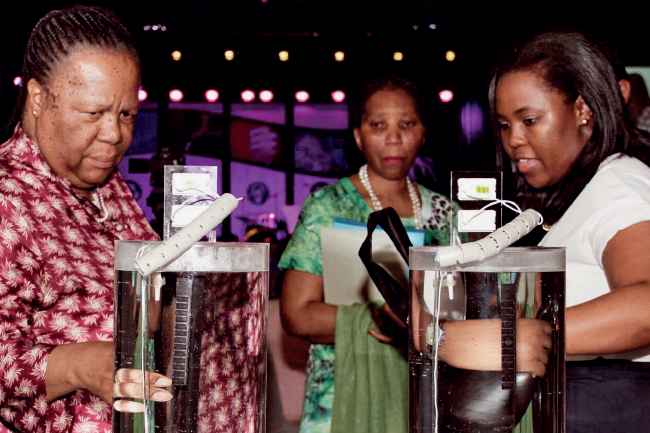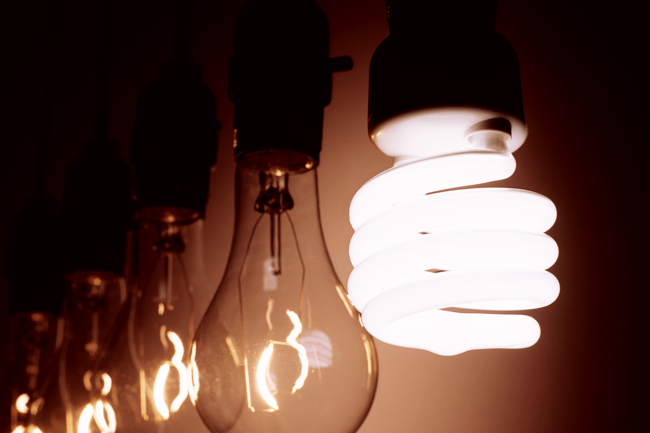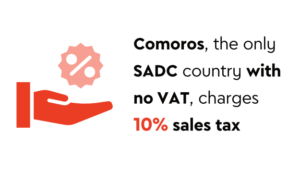The world is getting warmer. According to US government scientists, 2016 was the hottest in 137 years – breaking the record set in 2015, which broke the record set in 2014. No wonder then that researchers at Lawrence Berkeley National Laboratory released a report predicting that 700 million new air conditioners would be installed worldwide by 2030, and 1.6 billion by 2050. In terms of electricity use, the report notes, that’s akin to adding several new countries to a world that’s already hot and very heavy on energy usage. It’s too hot, so more people install air conditioners, which use energy and make the world hotter still… And so the cycle goes.
This growing problem made Samsung’s announcement at the 2017 Samsung Africa Forum, held in Cape Town, South Africa in late February, feel like a breath of cool, fresh air. Among the new product range was the Samsung wind-free air conditioner. This piece of home tech – powered by the internet of things and controlled via Samsung’s smart home app – disperses slow-moving cool air through 21 000 micro holes. This creates what the manufacturers refer to as ‘a cooler indoor climate and optimal energy efficiency without the discomfort of direct cold airflow’.
Better still is the claim that the Samsung air conditioner actively lowers power consumption by up to 72% once the desired room temperature is reached.
Energy-efficient technologies such as this are good news for homes and businesses looking to reduce their energy bills. They’re also good news for the countries – many of them African – that already count themselves among the hottest and sunniest on the planet. Here, the solution to the deepening energy crisis may lie in the source of all that heat.
Across sub-Saharan Africa, solar energy is becoming an increasing source of investment – and hope. In South Africa, the Western Cape government began the year with an energy efficiency-awareness campaign under the slogan, Solar – the Best Way to Save Under the Sun. The campaign promoted the installation of solar water heaters and photovoltaic (PV) panels, emphasising their cost-effectiveness and environmental benefits. As part of the campaign, MEC of economic opportunities Alan Winde visited the Lansdowne Bottling Company in industrial Philippi, which draws all of its electricity from rooftop solar panels and PV cells. ‘The owner told me that his decision to invest in energy efficient infrastructure is already paying off,’ Winde told reporters.
‘While their annual energy bill would have amounted to ZAR2.3 million this year, they are expecting it to come out at ZAR1.7 million due to savings as a result of their PV system. They are able to invest these savings into projects to grow their business. This illustrates the significant benefits for businesses of switching to green forms of energy. I am happy to report that many companies in the province have already heeded the call.’

Dirshan Patel, owner of the Lansdowne Bottling Company, said the company has already ‘made some savings, which we will look at reinvesting into our business. But our ultimate goal is to see a long-term saving as well as contributing to our environment in a positive way. Going green has always been in our vision and I’m happy that we’ve completed Phase 1’.
The second phase involves feeding excess electricity back into the City of Cape Town’s power grid, in exchange for which the company will receive a feed-in tariff.
The Lansdowne Bottling Company is not a big one. A family-run business, it began in Cape Town’s District Six in the 1930s, before moving to larger premises. By embracing solar power to the extent that it has, the company is demonstrating how this type of energy efficiency can be implemented – immediately and effectively – by virtually any business.
Expect more to follow. Solar energy has now reached a point where – according to a recent report by the WEF – it costs less than fossil fuels when used at scale.
‘The unsubsidised, levelised cost of electricity (LCOE) for utility-scale solar photovoltaic, which was highly uncompetitive only five years ago, has declined at a 20% compounded annual rate, making it not only viable but also more attractive than coal in a wide range of countries. By 2020, solar PV is projected to have a lower LCOE than coal or natural gas-fired generation throughout the world,’ the report states.
‘Renewable energy has reached a tipping point,’ says Michael Drexler, WEF head of long-term investing, infrastructure and development. ‘It now constitutes the best chance to reverse global warming. Solar and wind have just become very competitive, and costs continue to fall. It is not only a commercially viable option but an outright compelling investment opportunity with long-term, stable, inflation-protected returns.’
As Cala van der Westhuizen, head of sales and marketing for Energy Partners Home Solutions, explained at the launch of the company’s Gauteng division at the 2017 Homemakers Expo in Johannesburg, South Africa is ‘one of the countries with the highest potential for solar energy generation in the world, with approximately 2 500 hours of sunshine per year. Yet there is still a relatively small percentage of the country’s residents who are actually taking advantage of this low-cost alternative.’
Energy Partners Home Solutions provides a range of solar and energy saving solutions for the consumer market, including its ICON system, which incorporates energy efficiency, renewable generation and backup solutions to reduce a home’s reliance on grid power by more than 50%.

‘Our solution enables home owners to take control of their energy by supplying a set of reliable products that form a fully integrated home energy solution that combines lighting, water heating and renewable energy – all effortlessly managed and monitored from a simple app on your smartphone,’ she said.
That trifecta – lighting, water heating and energy – remains at the heart of the continent’s energy efficiency puzzle. Yet it’s a puzzle that governments, local innovators and businesses big and small are working hard on solving.
The Zimbabwe Energy Regulatory Authority (ZERA) recently announced a blanket ban on the manufacturing, importation and distribution of what it calls ‘inefficient’ light bulbs – including most incandescent bulbs.
While ZERA is hoping to promote the use of energy-saving fluorescent bulbs, market forces are driving the growth of solid-state lighting.
According to a recent Markets and Markets report, the solid-state lighting sector was worth US$118.29 billion in 2015, and is expected to reach US$174.45 billion by 2022, growing at a CAGR of 5.38%. These energy-efficient LED lights generate better, cheaper and longer-lasting lighting.
They are also – according to a new study by the University of Bristol – less attractive to nuisance insects compared to traditional filament lamps. Crucially, they’re also relatively easily available.
Water heating has also received an unexpected boost at the Global Cleantech Innovation Programme for SMEs in South Africa 2016 awards ceremony, where Amahlathi Eco-Tech was recognised as the most promising youth-led business thanks to an innovative power-saving geyser solution – Hot Spot. A glove-like device is retrofitted over a standard geyser element to push hot water from the bottom to the top via thermosiphon. It provides 50 litres of hot water within half an hour at 50°C for households and small commercial users.
‘I was one of those people who used to switch the geyser on and off because I wanted to reduce my electricity bill,’ Hot Spot designer Sandiswa Qayi told the Star. ‘I used to wake up at 4.30 am to switch my geyser on to have hot water at 6.30.’
South African platinum group metals producer Impala Platinum is working on another, more capital-intensive alternative, installing an 8 MW fuel cell at its Impala Platinum refinery. Hydrogen fuel cells offer near-zero emissions, reliability, noise reduction, efficiency and flexibility – but the costs are high, and they’re not a viable option for every business. Not yet, at any rate. ‘Fuel cells are at a point solar was about four years ago,’ Implats fuel cell co-ordinator Fahmida Smith told Moneyweb.
‘The total cost of ownership based on our requirements and heat integration for the 8 MW does show a decrease in energy cost to us over a 20-year power purchase agreement. With economies of scale, the price of capital will decrease as was the case in solar PV.’
For many years, the continent faced the problem of efficient energy not necessarily being cheap or accessible. But as solar power reaches its tipping point, and other efficient energy alternatives follow suit, organisations and communities are seeing the benefits – and possibilities – of doing more with less.



















